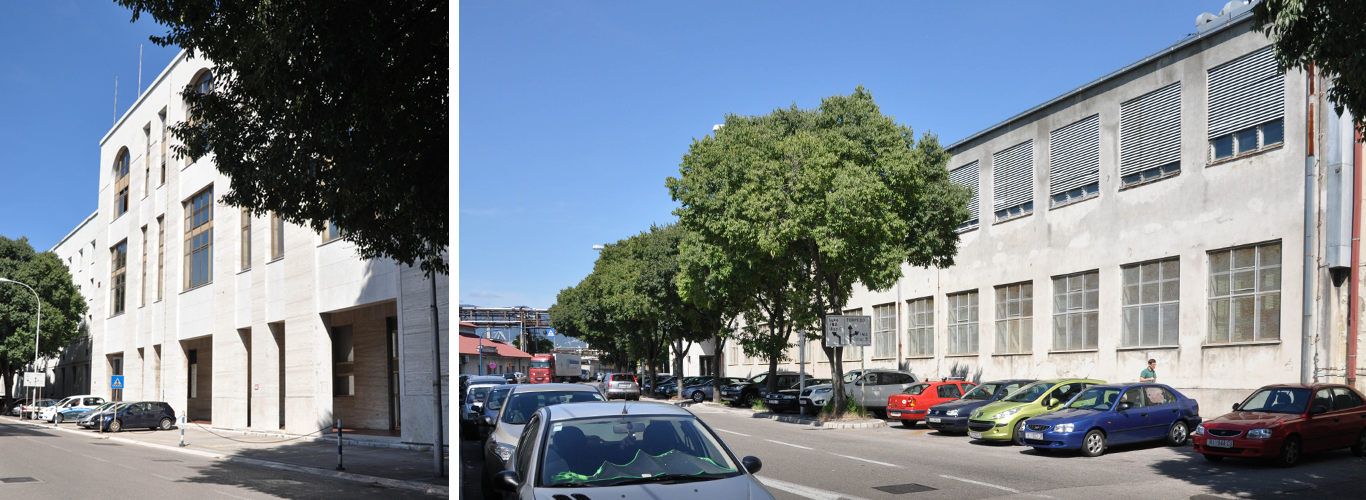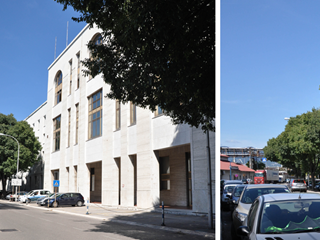The operational building of The Rice Mill
address: Milutina Barača StreetPeriod: Historicism
Kind: Immovable material heritage
Century: 19
Year: 1881
Purpose: industrial
The Rice Mill with its rice-husking facility, also known as Prima Fabrica Fiumana Per La Pillatura Del Riso, was designed in 1881 by the local architect Mate Glavan. It was located in the western industrial zone, in the Via Volosco (today’s Milutina Barača Street). It is a bulky, almost bastion-like six-storey facility with prominent triangular gable roofing. The façade is characterized by rows of window openings and minimal decoration. Almost nothing has been preserved from this facility, since it was completely reconstructed and incorporated into the administration building of the Oil Refinery after the collapse of the Rice Mill. Glavan was in charge of the design of the storage and other auxiliary facilities within the factory complex, including the railroad tracks to the seashore.
In 1889, the construction of the administrative building of the Rice Mill started according to the project of the esteemed architect Giovanni Randich. It was a three-storey facility with harmonious proportions and a richly articulated façade with neo-renaissance characteristics. The building was located on the west side, alongside the main production facility.
In the second half of the 19th century, the Rice Mill was one of the major enterprises of the food industry. The investor for this facility was the Hungarian General Credit Bank from Budapest in cooperation with local businessmen. In 1890, the annual production amounted to 25,000-30,000 tons of rice, and the factory employed 400 workers. At the turn of the century, the rice mill went through a period of crisis due to strong competition from the Austrian, Hungarian and the nearby Trieste market.
The Rice Mill ceased to operate after the First World War, and the Oil Refinery expanded its premises on the mill’s estate.
Valorization:
Today the INA administrative building is located in the former Rice Mill plant. A major remodelling was done by Eneo Perugini in 1938, which made the original appearance of the building unrecognizable, only the outer shape is preserved today.
Bibliography:
DARI, JU 51, kutija 116, 118, 132.
Klen, Danilo, Povijest Rijeke, Tipograf, Rijeka, 1988.
Magaš, Olga, Industrijska arhitektura, Arhitektura historicizma u Rijeci, MMSU, Rijeka, 2001.




